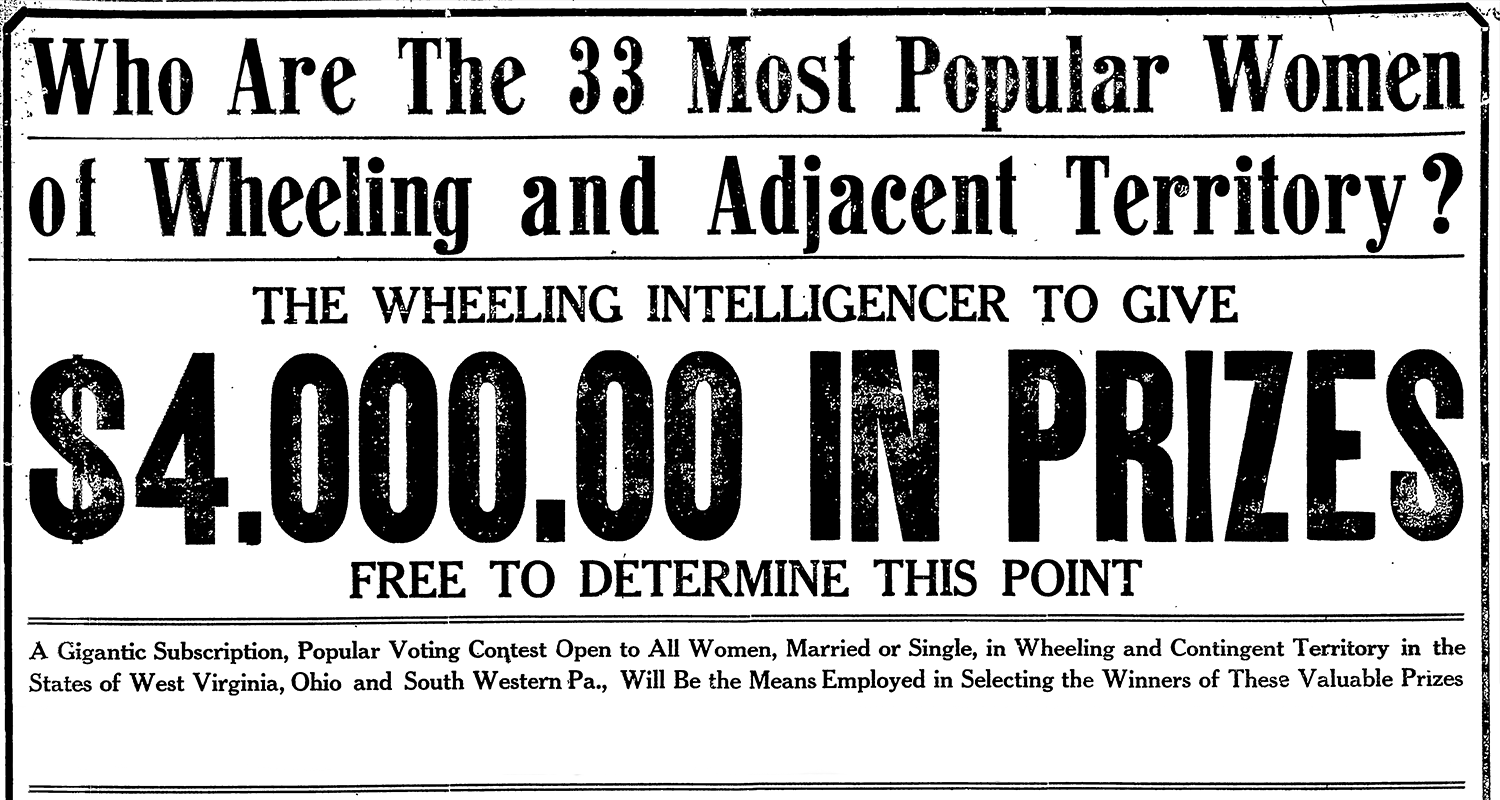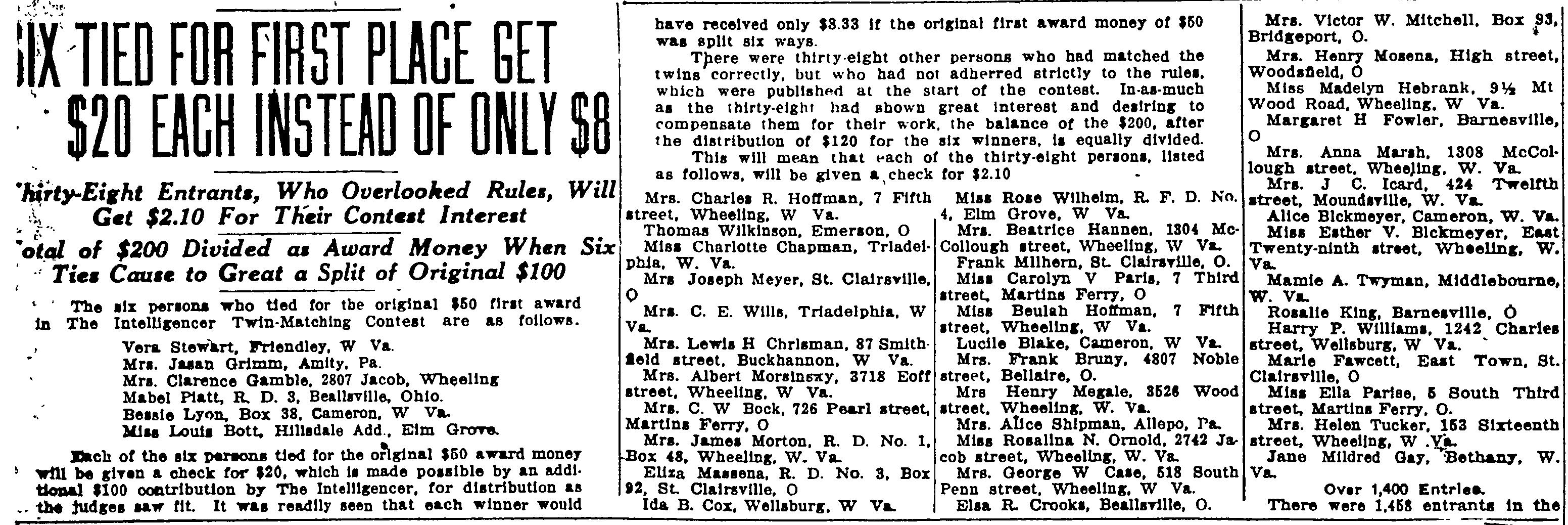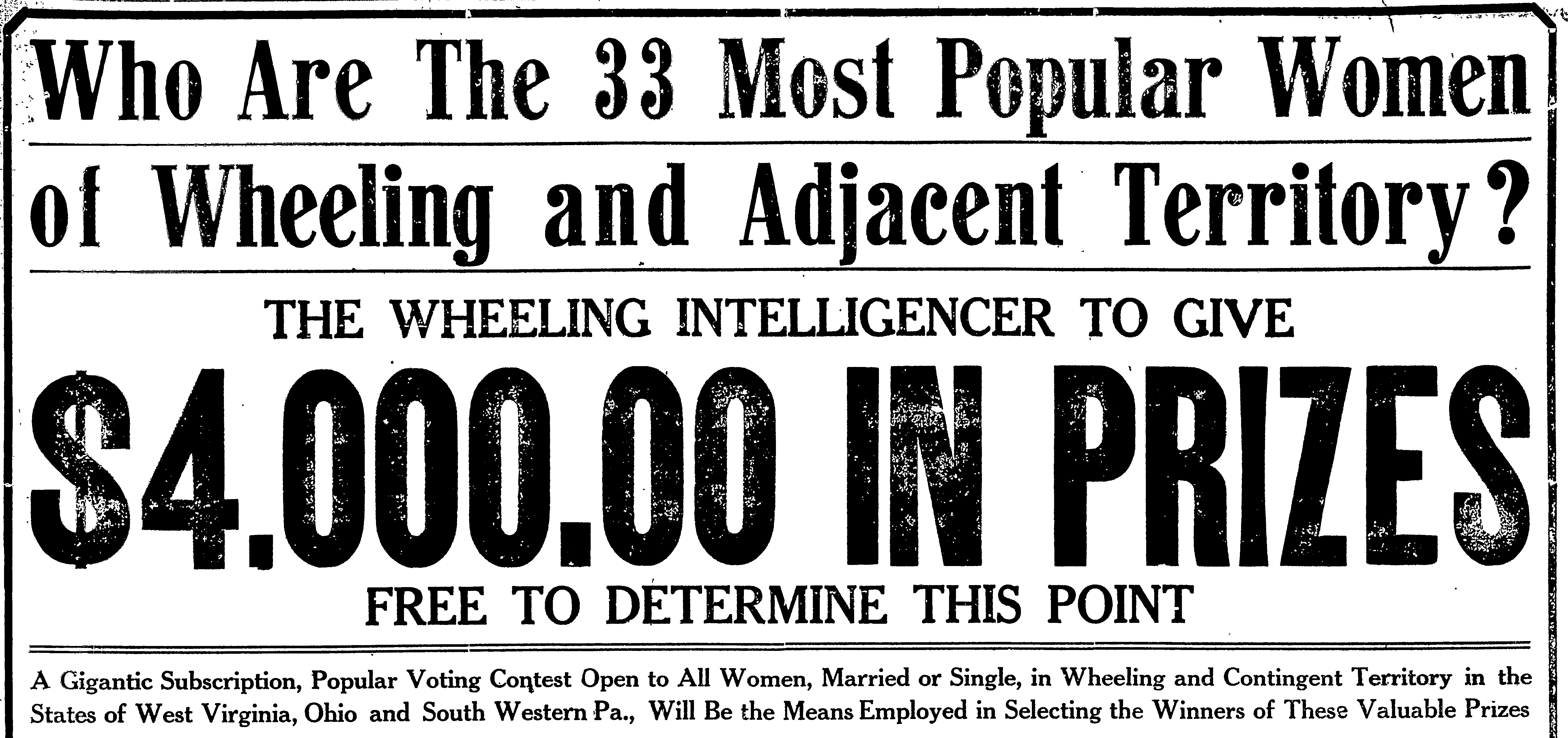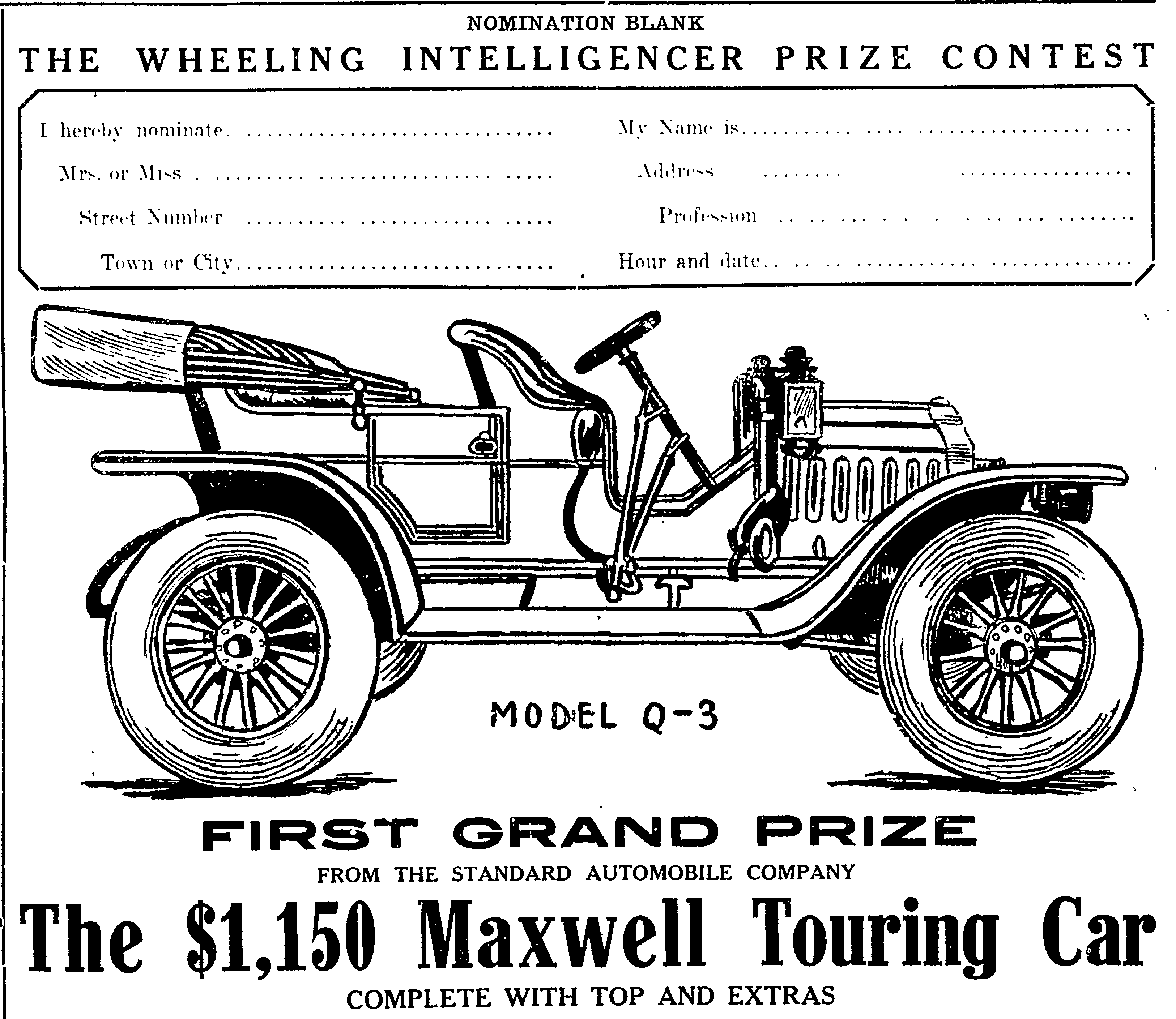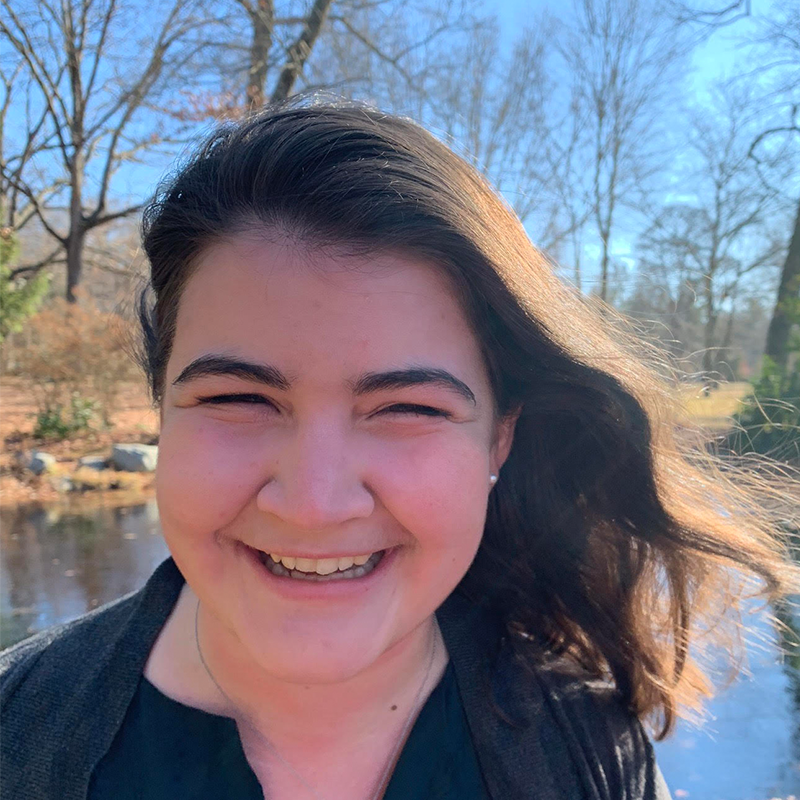What is the weirdest contest that you’ve ever competed in? Throughout Wheeling’s history, there have been some funky contests—from twin-matching to babies and more! Some of the contests were just for fun, but some were to raise money for a charitable cause or encourage subscription to the newspaper. Check out three of the most unusual or unique contests in Wheeling’s history…
Beautiful Baby Contest
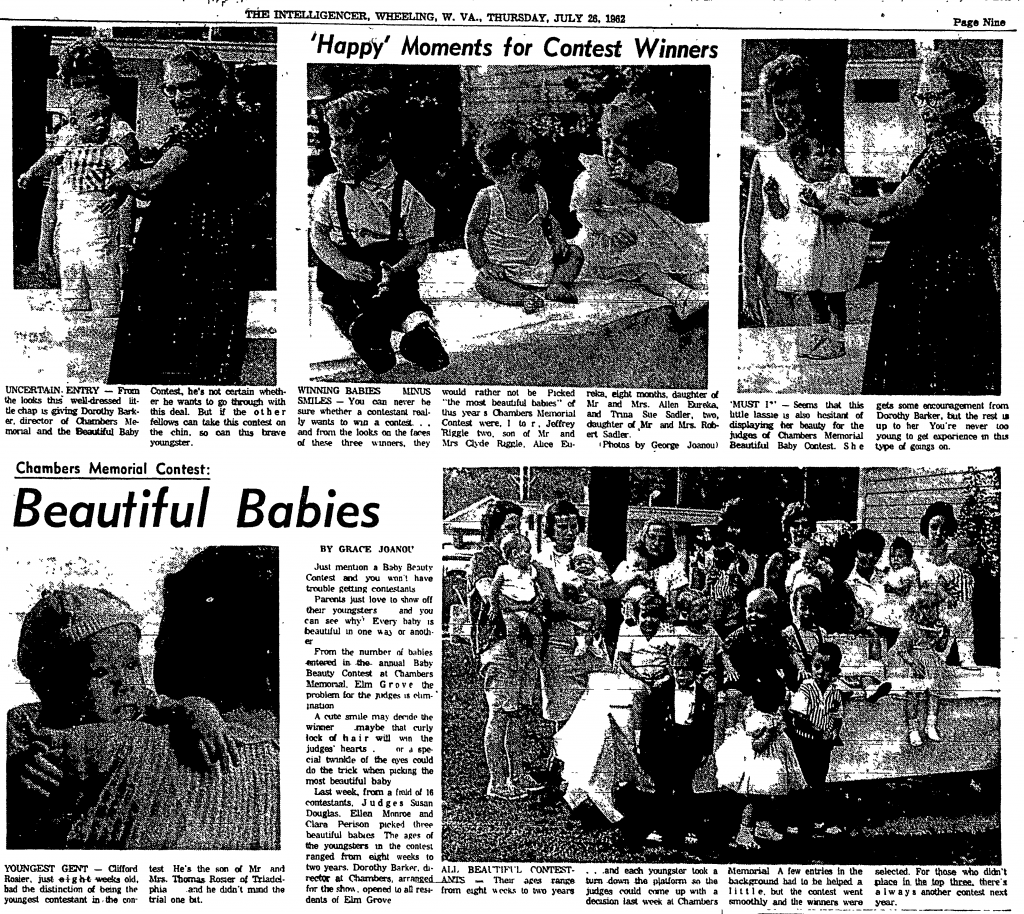
Baby beauty pageants or cutest baby contests are not unique to Wheeling; they’ve actually been around for over a hundred years…but, it doesn’t make them any less odd. For a topic as cute and beloved as adorable babies, baby shows have a complicated history.
The first baby show was started in 1855 in New York City by the famous P.T. Barnum, of circus fame. At the time, it was controversial but very popular with 60,000 attendees.1 Around the turn of the century, the baby beauty contests shifted to “better baby contests,” where the focus was on the baby’s health in an attempt to educate mothers about the best child rearing practices.2
By the 1950s, due to the fear of the spread of polio in children, better baby contests became a thing of the past. However, once most children were vaccinated against polio by the early 1960s, baby beauty pageants returned—allowing for this Beautiful Baby Contest in Wheeling in 1962! According to the Intelligencer, “a cute smile may decide the winner, maybe that curly lock of hair will win the judges’ hearts…or a special twinkle of the eyes could do the trick when picking the most beautiful baby.”3 Wheeling’s cutest baby contest seems like it was mostly an excuse to dote on a bunch of cute toddlers.
Twin-Matching Contest
Periodically, the Intelligencer would host contests to encourage readership and subscriptions. This twin-matching contest in 1929 was advertised as “a game in which the entire family can take part.” The newspaper printed several pictures of unmatched twins from the Wheeling area every day of the contest. To participate, the reader had to cut out the pictures, match the twins, and paste them in a scrapbook.4 Therefore, you had to purchase (or better yet, subscribe) to the newspaper every day for the length of the contest, which lasted several months.
But Wheeling-area residents were too clever—six women tied for first place! Originally, first place would have received $50, so split six ways, each woman would only receive $8. However, after the debacle, the Intelligencer contributed an extra $100 so that every first-place winner would get a $20 reward. In addition, there were an additional thirty-eight people who matched the twins correctly but did not follow all of the rules, so they received $2.10 for their interest. Regardless of whether the contest actually generated new subscriptions for the paper, there was incredible interest in the contest with 1,453 entries!
Wheeling Women Popularity Contest
Another contest by the Intelligencer, but this time a blatant popularity contest from 1910! Any woman, between 15 and 70, who was a “respectable resident” of the Wheeling area was eligible to compete. The city and surrounding territory was divided up into eight districts and women had to compete to get the most number of votes in their area. The grand prize was a $1,150 Maxwell Touring Car (approximately $31,082 in today’s money) which would have made quite the impression on the streets of Wheeling in 1910.
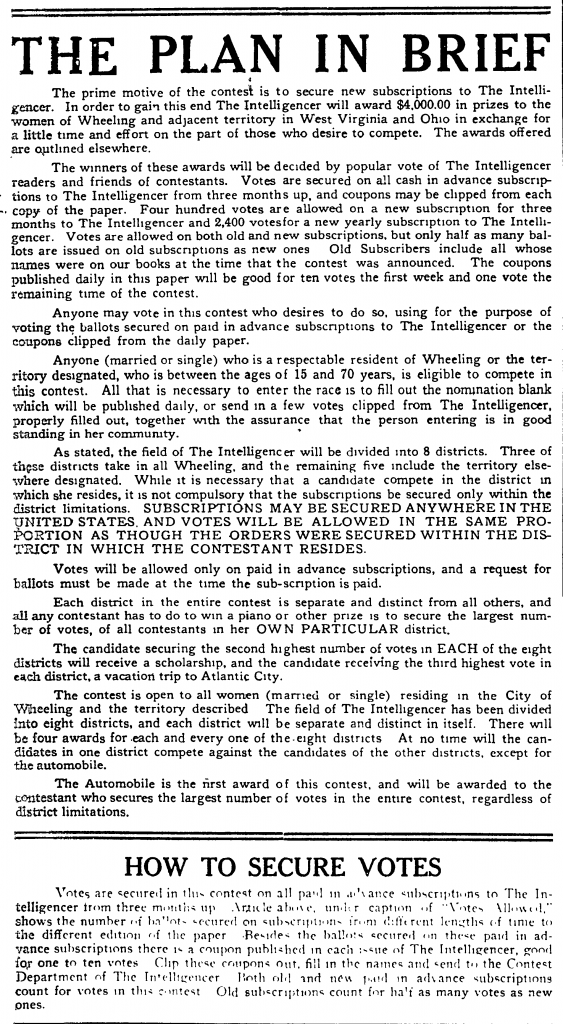
At least this time, they were upfront about the ruse to gain more readership—the first line is “the prime motive of the contest is to secure new subscriptions to The Intelligencer.”5 Coupons, worth ten votes, were printed in the paper daily. The only wait to get the coupon was to subscribe to the paper for at least three months. Throughout the contest, the standings would be published in the paper so that women could monitor how close they were to victory. On the last day, a Miss Florence Dinsmore of Moundsville was in the lead with 320,684 votes–nothing like a good old-fashioned popularity contest to stir up drama in the neighborhoods!6
• Emma Wiley, originally from Falls Church, Virginia, was a former AmeriCorps member with Wheeling Heritage. Emma has a B.A. in history from Vassar College and is passionate about connecting communities, history, and social justice.
References
1 “The Baby Show Exhibit,” The Lost Museum Archive, American Social History Project/Center for Media and Learning, City University of New York, 2021, accessed April 21, 2021, https://lostmuseum.cuny.edu/archive/exhibit/baby/.
2 Susan Pearson, “Better Baby Contests,” NCpedia: Encyclopedia of North Carolina, 2006, accessed April 22, 2021, https://ncpedia.org/better-baby-contests.
3 “Chambers Memorial Contest,” The Intelligencer, July 26, 1962, p. 9.
4 “Intelligencer’s “Twin Matching” Contest May Be Started Monday,” The Wheeling Intelligencer, February 6, 1929, p. 2.
5 “Who Are The 33 Most Popular Women of Wheeling and Adjacent Territory?,” Wheeling Intelligencer, May 16, 1910.
6 “Last Chance at Intelligencer’s Big Prizes Will be Offered Today,” Wheeling Intelligencer, July 30, 1910, p. 1.


